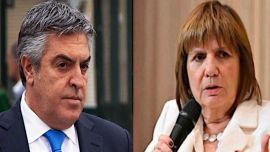Brazil’s president Jair Bolsonaro has just led his country, and indeed all of Latin America, to the end of a long cycle.
Almost two decades ago, the election of Luiz Inacio Lula da Silva — a union leader perceived as an extreme left-winger — to Brazil’s top job created one of the biggest buying opportunities in recent financial history.
Having collapsed at first as investors took fright, the country’s stock market went into orbit, growing at more than two-thirds per year from Lula’s election in 2002 until the global financial crisis in 2008. For years after that, it continued to outpace the US S&P 500 Index.
Now, under Bolsonaro, elected in 2018, Brazil is almost back to where it was when Lula took over, its previous massive outperformance now erased.
Looking at the continent as a whole, the picture looks even bleaker, with much of the rest of the region following a similar trajectory since the first few years of the century.
Initially, power shifts alarmed the rest of the world, as Mexico’s electors booted out the Institutional Revolutionary Party in 2000 after 71 years in power, ushering in a period of intractable political deadlock; the opposition in Venezuela staged an unsuccessful coup against President Hugo Chavez; and Argentina abandoned its one-to-one peg with the dollar in 2001 and subsequently voted the Peronists back into power.
Amid these seemingly market-unfriendly conditions, Latin America’s politicians set the stage for an extraordinary period of outperformance, which didn’t peak until 2011, two years after the financial crisis. Over 10 years, the region’s stock markets beat MSCI’s index for all world stocks by 360 percent, a feat that has since fizzled out.
Outperformance
There were two broad factors behind the earlier surge. First, the rest of the world moved in Latin America’s favour. With China growing and demanding more raw materials, the region’s mining-based economies boomed.
The US looked the other way as Latin American migrant populations established themselves and sent remittances home. And global financial markets directed a fire hose of money at the region. Currency “carry traders” looked to borrow in Japanese yen and park in currencies with high interest rates — which tended to mean Brazil.
The growing vogue for passive investing and exchange-traded funds led many investors to buy “emerging markets” of BRIC (Brazil, Russia, India and China) funds to cash in on growth in China — and in the process shower cash into the small and relatively illiquid stock markets of Brazil and the rest of the region. Prices shot up.
Secondly, the politicians proved to international investors that they could be trusted. Lula turned out to be a market-friendly pragmatist in office. Mexico left the running of the economy to a series of US-trained economists who balanced the books and vanquished inflation, even if they failed to stimulate much growth.
Peace came to Colombia. With the significant exception of Venezuela, the region turned out to be far better governed than had been feared.
Now, those favourable conditions have been turned on their head by the coronavirus, which has cruelly exposed weak political leadership. In 2018, Brazil and Mexico elected populists as president — Jair Bolsonaro, a right-wing nationalist in Brazil, who was initially well received by the markets, and Andrés Manuel López Obrador (known by his initials of AMLO), a veteran left-winger in Mexico, who initially prompted a market sell-off.
Bolsonaro delivered on pension reforms that many saw as crucial to solving Brazil’s deep-seated fiscal problems, while Amlo proved to be much more pragmatic and fiscally conservative when in power than feared.
But the pandemic has been a disaster for both of them. Total reported cases in Latin America are still below the total for New York state, but across the region cases are rising, following a menacing exponential growth. There is no sign of curve-flattening.
In Brazil, Bolsonaro has described Covid-19 as a “little flu,” while joining protests against lockdown restrictions and firing his widely respected health minister. His justice minister then also resigned, alleging political interference with the Judiciary. Bolsonaro now faces calls for impeachment.
In Mexico, AMLO also stayed remarkably relaxed about the pandemic, mixing with people at rallies and exhibiting pictures of saints as a protection against the disease. He has now upended all expectations by refusing to go along with fiscal expansion, and even cutting back public spending — including public sector Christmas bonuses — in the face of the pandemic.
Other countries in the region have spent money as aggressively as they could, with Peru’s fiscal program coming to 12.5 percent of GDP. AMLO has erred in the exact opposite direction to the market’s fears before his election. And so, confidence in the basic judgment of both Latin America’s leading populist presidents is now dangerously weakened.
Meanwhile, global economic conditions that raised the continent two decades ago now conspire against it. The virus’s effect on demand for raw materials is acute, particularly for the major oil producers in the region. Across Latin America, inflation has come under control, but at the cost of what appears to be a dose of secular stagnation.
Investors are now fleeing emerging markets, often leading to big sales of Latin American stocks and bonds by passive players. Low interest rates mean that the region’s currencies are no longer attractive to carry traders, and so they have sold off drastically. Brazil’s real is at an all-time low.
Achilles heel
Once inflation is taken into account, the decline of the Mexican peso has been even more severe.
Both Brazil and Mexico also suffer from an Achilles heel. Petrobras, Brazil’s national oil producer which is a public company, and Pemex, the nationalised Mexican oil producer, are bedevilled by corruption, and have been grievously hit by the slumping oil price.
That, in turn, has damaged the perceived creditworthiness of the underlying sovereigns. Weakening currencies make this worse. Mexico’s risk of default is now seen to be higher than at any time since 2008; Brazil’s default risk is even higher.
Could Latin America be about to provide another epic buying opportunity? It is the region’s misfortune to be treated almost as a derivative of growth in the rest of the world, outperforming on the way up, and crashing when the rest of the world is slowing down. And if we compare prices to trailing earnings and to book value, the region looks as cheap as it did 20 years ago.
The problem is that value needs a catalyst before it can be realised. Two decades ago, that came from new leadership, and from the extraordinary growth of China. Now, AMLO and Bolsonaro have years left in their respective terms, while China is retrenching. They also have to face the Covid test, which many investors currently believe they will fail.
Should these leaders deal with the pandemic better than many now fear, while the world recovers into the end of the year and the oil price recovers enough to relieve the pressure on the region’s oil producers, then there is every reason to hope that Latin American investments will outperform. But all of these things need to happen first.
And even if they do, this will not be the spectacular buying opportunity presented all those years ago by Lula.
by John Authers, Bloomberg Opinion




















Comments